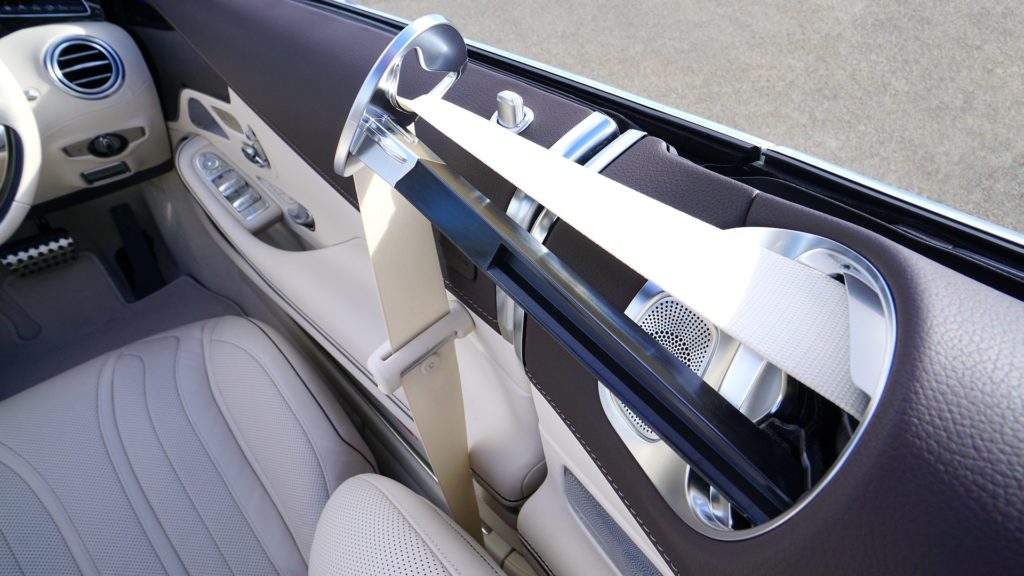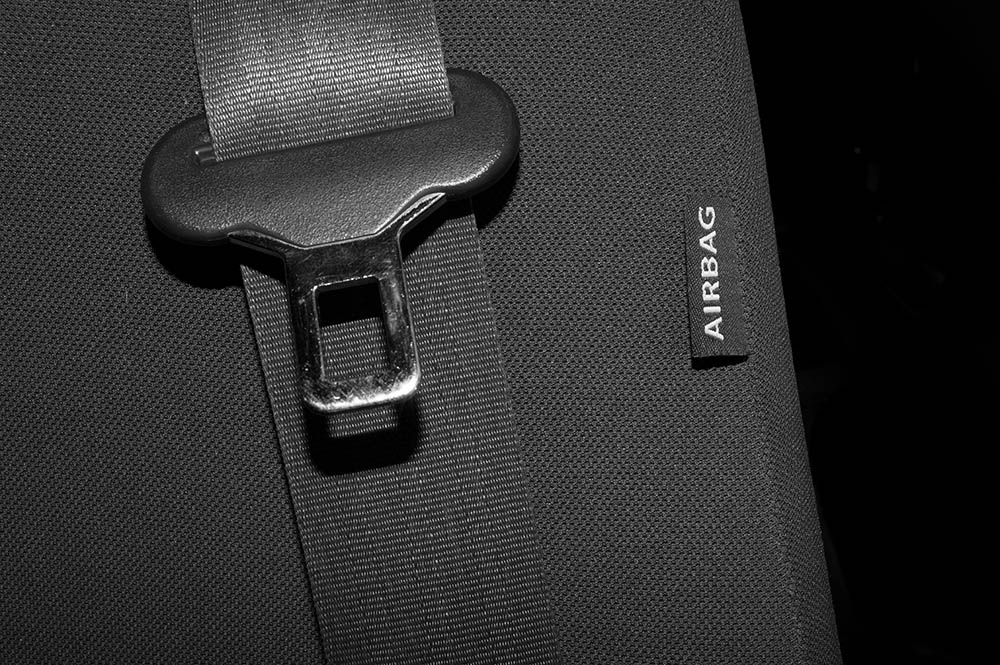When Were Seatbelts Invented? History, Types, & FAQ
-
Jeff Weishaupt
- Last updated:

Seatbelts are one of the most important safety aspects of our cars. Having saved innumerable lives, there’s no doubt that this feature is irreplaceable and one of the best inventions in history. But when did this great moment in time occur?
George Cayley invented seatbelts in the mid-19th century, but there’s much more to it. This security feature has an interesting history that most of us don’t know about. So, keep reading if you’re keen on learning more about the belt that has saved millions of lives.
When Were Seatbelts Invented?
George Cayley, an aeronautical engineer, invented the first seatbelt to keep pilots in their gliders in the mid-19th century, but that is all his seatbelt was used for. Then, in 1885, American Edward J. Claghorn patented the seatbelt, keeping tourists safe in New York City taxis. Despite his efforts to protect New Yorkers, New York repeatedly considered and rejected the legality of seatbelts.
In the 1930s, physicians began stressing the importance of seatbelts in all cars after finding the results of their lap belt tests. During these tests, they installed seatbelts in their own car and saw increased stability and safety while driving. Soon enough, the Sports Car Club of America made it mandatory for drivers to wear seatbelts while competing in 1954.
In 1955, the Society of Automotive Engineers (SAE) arranged the Motor Vehicle Seat Belt Committee. More importantly, Swedish engineer Nils Bohlin introduced the three-point seatbelt with Volvo in 1958, following the two-point lap belts. These are the seatbelts that most cars use today, which have saved over a million lives in the 64 years since their invention. Soon after, most automobile companies began selling seatbelts as optional equipment.
It’s also worth noting that C. Hunter Shelden contributed retractable seat belts to the automotive industry in the early 50s. Meanwhile, Nash became the first car manufacturer to include seatbelts in 40,000 of their 1949 models, but consumers requested to remove them. Ultimately, only a thousand of those models retained this safety feature. This resistance to seatbelts continued when Ford offered the safety feature in 1955, but only 2% of buyers were willing to pay for it. Finally, in 1966, the National Traffic and Motor Vehicle Safety Act was passed, which required automobiles to follow certain safety measures.

Types of Seatbelts
Various seatbelts dominate the automotive industry from different inventors, but three-point belts are most commonly used in passenger cars. Here are a few facts about each and their history.
1. Lap
The lap belt features a strap over your waist and is most commonly used in older cars aside from three-point belts. Most coaches and passenger aircraft seats still use lap belts. James J. Ryan, a professor at the University of Minnesota, invented and patented the automatic retractable lap safety belt.
Until the 80s, the back seats of cars only had lap belts, which proved to cause separation of the lumbar vertebrae or “seatbelt syndrome.” As a result, manufacturers offering lap belts in their cars can suffer from liability cases in these occurrences.
2. Sash
Sashes, also known as shoulder harnesses, cross the upper body diagonally, attaching to a separate tongue and buckle or the lap belt. Typically, these seatbelts work in conjunction with lap belts in the front seats of automobiles.
The US National Highway Traffic Safety Administration forwarded the Federal Motor Vehicle Safety Standard 208 in 1968, requiring the shoulder belt. Contrastingly, physicians also recommended that the shoulder harness isn’t used independently, as it can cause the passenger to slip out from under the belt.

3. Two-Point
A two-point seatbelt connects to two endpoints, first used by pilot Benjamin Foulois in 1910. In 1923, the Irvin Air Chute Company made a two-point seatbelt for racer Barney Oldfield to wear in the Indianapolis 500.
4. Three-Point
Three-point seatbelts are a unified arrangement of lap and sash belts, evenly protecting the chest, pelvis, and shoulders in an accident. The first three-point seatbelt was introduced by Volvo and developed by Nils Bohlin in 1959 in the Volvo PV 544. Soon, the automobile company opened the patent for better safety for drivers.
5. Others
Other seatbelt styles include the belt-in seat, which consists of a shoulder belt attached to the seat, and seatbelt airbags, only found in some Mercedes and Ford models. Four, five, and six-point harnesses are typically used for children or racers. Seven-point harnesses are used in aerobatic aircraft.

What Were the Initial Drawbacks of Seatbelts?
Initially, two-point seatbelts and lap belts were used everywhere, especially in aviation and long-haul coaches. However, the main hindrance was their ineffectiveness.
As a single strap couldn’t restrain the torso, there were chances of the chest, spinal, and head injuries during an accident. It was also possible for the belt to crush the wearer’s internal organs on impact. Other than that, everyone seemed unwilling to wear seatbelts due to their discomfort. As we mentioned, Barney Oldfield was the first racer to use a seatbelt created by the Irvin Air Chute Company in an Indianapolis 500 race.
Still, most Indianapolis 500 racers still chose to jump out of their cars on a collision course, which is why the Sports Car Club of America made it mandatory for racers to wear seatbelts while competing in 1954.
Nash included seatbelts in 40,000 of their seatbelt models, but buyers demanded their removal due to the frequent prevention of escape and failing buckle systems. As a result, the manufacturer could only sell 1,000 of those models. Ford also included optional seatbelts in their cars at $25, but almost all buyers demanded the removal. However, only 2% of buyers agreed to pay for the seatbelt, so it’s clear that automotive safety was not a priority for the general public during the time.
The public had difficulty accepting this new, somewhat restrictive technology and refused to listen to physicians’ urgent suggestions of adopting seatbelts. But once the government made it mandatory to follow certain security measures while driving, seatbelts were able to save millions of lives. In addition, it helped greatly when Nils Bohlin invented a more comfortable and effective version of the seatbelt: the three-point seatbelt.

Which Car First Adopted Seatbelts?
Volvo worked with Swedish engineer Nils Bohlin to introduce the three-point seatbelt. As a result, the 1959 Volvo 122 was the first car to include a seatbelt as a standard item. During this car’s initial delivery in 1958, it had a two-point seatbelt system, but the new and improved model featured a safer and more effective solution in the following year.
This was a groundbreaking development in the automotive industry, promising the reduction of many vehicle-related deaths. These promises came to fruition when Nils Bohlin’s invention and design were able to save millions of lives in the following years.
The release of the 1959 Volvo 122 helped Bohlin earn a patent for his three-point seatbelt. The Volvo PV544 and the Amazon 120 are some of the first cars to include a three-point seatbelt system.
Instead of utilizing Bohlin’s idea to earn millions, or even billions, of dollars, Volvo opened the petition for this idea, allowing other automobile manufacturers to include seatbelts in their cars due to the interest in the general public’s safety. The company has also made available its crash-related research over the past six decades, allowing businesses to learn and make their vehicles safer.

When Did Seatbelts Become a Legal Requirement?
Seatbelts became a legal requirement in 1966 when the US government passed the National Traffic and Motor Vehicle Safety Act. This required automobiles to follow certain safety measures, including seatbelts while driving. Within the next two years, all passengers had shoulder harnesses.
By 1974, all cars included lap and shoulder belts. However, upon finding that only 10% of drivers were using seatbelts, states decided to step up their seatbelt laws to primary or secondary enforcement.
Thirty-four states consider seatbelt violation a primary offense, for which officers can stop and ticket drivers. Nine of these states originally had secondary enforcements but changed them to primary enforcement, successfully encouraging seatbelt use.
Meanwhile, 15 states consider seatbelt violation a secondary offense, for which officers can only stop or cite drivers. New Hampshire is the only state with no seatbelt enforcement for ages 18+.
Conclusion
Volvo claims, “Few people have saved as many lives as Nils Bohlin.” The statement couldn’t be truer, as the modern seatbelt helps save tens of thousands of lives yearly in the US.
With every country’s seatbelt laws getting stricter, there’s a better chance of avoiding automotive deaths. Unfortunately, the decades leading up to the seatbelt mandate were difficult and resistant, with the uninformed and uncomfortable public refusing to restrict themselves to the new technology.
Now that the benefits of a seatbelt are clear, people can drive more responsibly now than ever.
- https://en.wikipedia.org/wiki/Seat_belt
- https://techhistorian.com/seatbelt-invention/
- https://www.forbes.com/sites/douglasbell/2019/08/13/60-years-of-seatbelts-volvos-great-gift-to-the-world/
- https://www.defensivedriving.com/blog/a-history-of-seat-belts/
- https://www.slashgear.com/what-was-the-first-car-to-use-seat-belts-27704224
Featured Image Credit: antoniodiaz, Shutterstock
Contents
